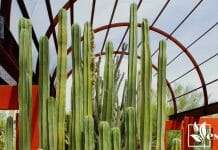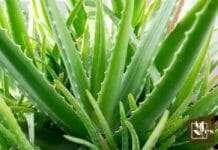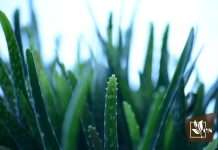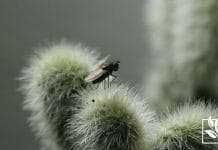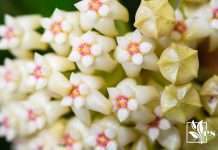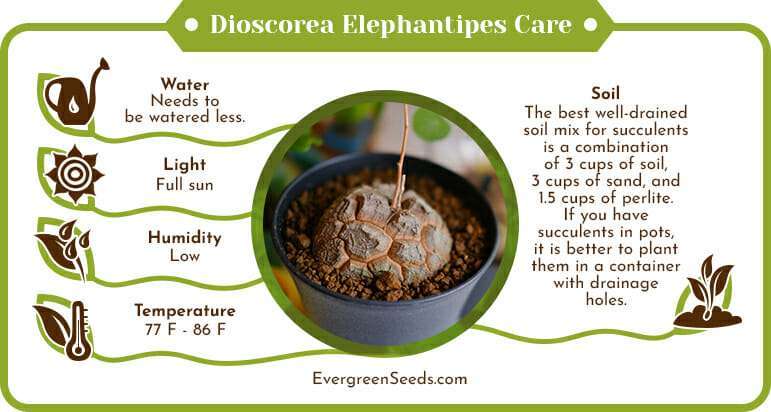 Dioscorea Elephantipes of the Dioscoreaceae family is commonly known as the Elephant’s foot plant because of its unique and dramatic stem, which has a hard textured covering. It matures into a 6 feet tall plant and is suitable for an outdoor environment.
Dioscorea Elephantipes of the Dioscoreaceae family is commonly known as the Elephant’s foot plant because of its unique and dramatic stem, which has a hard textured covering. It matures into a 6 feet tall plant and is suitable for an outdoor environment.
This strange-looking plant is succulent and produces climbing shoots with flowers that are greenish-yellow. Continue reading to find out how you can take proper care of this magnificent Dioscorea genus plant.
JUMP TO TOPIC
What is Dioscorea Elephantipes?
Dioscorea Elephantipes is a deciduous climber. It was given the name elephant’s foot because of its partly concealed, slow-growing tuberous stem. The stem can get as big as 10 feet in width and 1 foot in height.
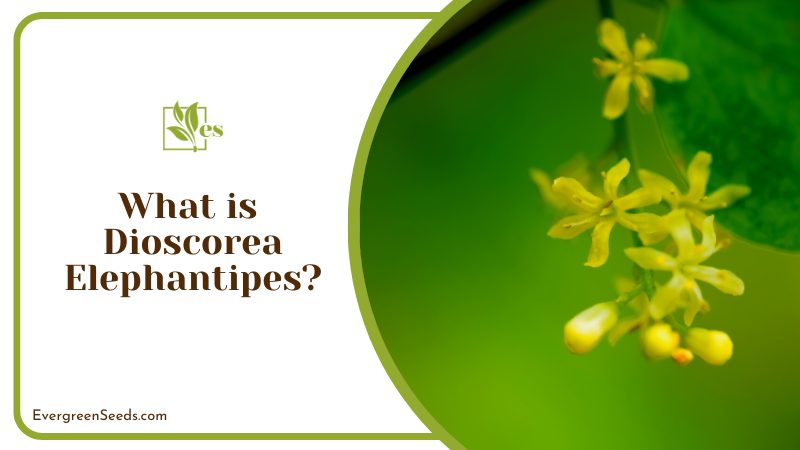
It is super-rich in starch and called Hottentot bread for this reason. The stem is protected by a thick and hard shield that looks like cork, which is heavily processed before being used. It is important to do that to get rid of the toxic elements.
-Growing Season
The growing season of Dioscorea Elephantipes is in winter. It grows faster during this time and hibernates during summertime. Long leafy shoots grow and begin climbing during the colder months, with flowers that are greenish-yellow with dark spots. These are dioecious and have male and family blooms growing on separate plants.
This succulent plant is very unique in that it blooms in spring. The greenish-yellow flowers are a treat and a nice addition to your plant collection, especially if you have them on display in a beautiful container.
-Growing Habits
The botanical name for the Elephant foot vine, which is native to South Africa, is Dioscorea Elephantipes. It belongs to the category of tropical plants. It is also known as Hottentot bread, turtleback, and turtle shell.
Elephant foot plants are great for growing in containers and can make an amazing green ornamental plant for both the home and office. They have fairly typical growing requirements, which makes them easy to take care of.
-Dormancy
What is unique about this plant, in addition to its appearance, is that it hibernates more than once a year. This is known as the latency period and is a time when the plant itself decides it needs to rest.
What is unusual about the dormancy period for an elephant foot plant is that it does not seem to happen based on the time of year, growing conditions, or anything else. Even two plants planted in the same pot can go dormant at different times. Another amazing and unique fact about the elephant foot plant is that it is dioecious, which means that male and female flowers appear on different plants.
Dioscorea Elephantipes Care
The Elephant toe plant prefers a hot climate. It can thrive in zones 9b to 11b, where the lowest temperatures are around 25 degrees Fahrenheit. Bring the plant indoors during winter and give it plenty of sunlight to keep it happy. Let us look at its needs in detail in the following section.
 Soil Requirements
Soil Requirements
When preparing well-drained soil for succulents, make sure to use the right mix ratio. Using this type of well-drained soil will help your plants live longer and grow stronger. Before you proceed, did you know that well-drained succulent soil plays an important role in succulent health?
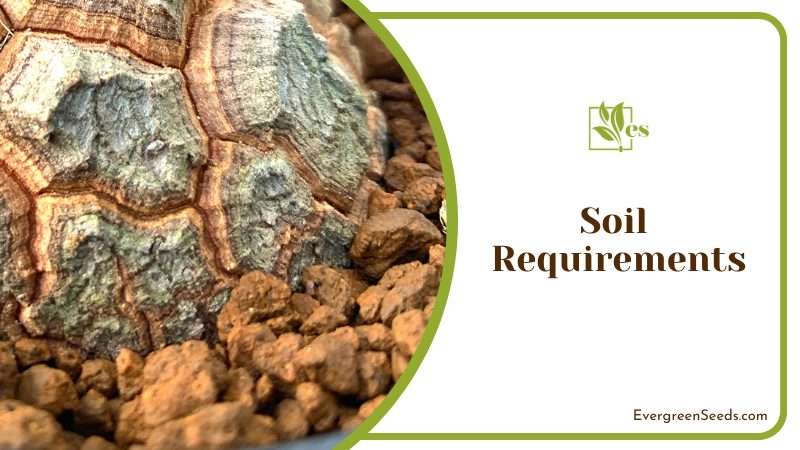
Growing and maintaining succulents will be a challenge, especially if you don’t know what type of soil to use. Even if the main enemy of your succulents is improper water frequency, the effect of your soil choices on your plant’s health is undeniable. The best well-drained soil mix for succulents is a combination of 3 cups of soil, 3 cups of sand, and 1.5 cups of perlite.
If you have succulents in pots, it is better to plant them in a container with drainage holes. The excess water will drain through these holes, and the roots of your plant will be much healthier. Be very careful with the amount of water being given to prevent root rot.
 Water Requirements
Water Requirements
Dioscorea Elephantipes can look very beautiful with good care. This type of succulent, like other succulents, typically needs to be watered less. The method of irrigation is very important in keeping your elephant foot healthy. You shouldn’t let the roots of the plant sit in water.
This species indicates when it needs water by growing leaves. As soon as new caudex growth appears, it can be watered regularly until the growth wilts and dies. At this point, the plant enters its summer sleep. You can safely use tap water for this plant.
Watering should then become less frequent until the next new growth appears. This cycle can be extremely unpredictable or erratic. In general, winters will be wet, spring irrigation will be regular, but the soil will remain drier in summers.
 Light Requirements
Light Requirements
The Dioscorea elephantipes plant is succulent, and that is why it prefers plenty of sunlight. These plants prefer full sun (direct or indirect) but can also settle in partial shade. However, like most succulents that prefer lots of light, these plants look best when kept in bright, direct sunlight.
 Temperature Requirements
Temperature Requirements
Dioscorea elephantipes, being native to warmer regions, loves heat. This plant will thrive in a warmer climate. It grows in winter and goes dormant during summer.
The ideal temperatures are between 77 to 86 degrees Fahrenheit, but keep it in temperatures above 64 degrees Fahrenheit for optimal growth.
-Potting
The Elephant feet plant is native to South Africa and will do best in containers elsewhere. You can plant them outdoors for warmth and sunlight, but bring them in during winter to keep them warm.
The roots are not deep, so this means you can plant them in shallow pots too. While potting the plants, make sure the soil is well-draining as the plant doesn’t like its feet to be wet. Roots decay fast with overwatering.
Propagation
Propagation is fun with any plant but is even more rewarding when a plant is as unique as the Dioscorea elephantipes. You can multiply your collection through propagation very easily. There are two ways to propagate your plants.
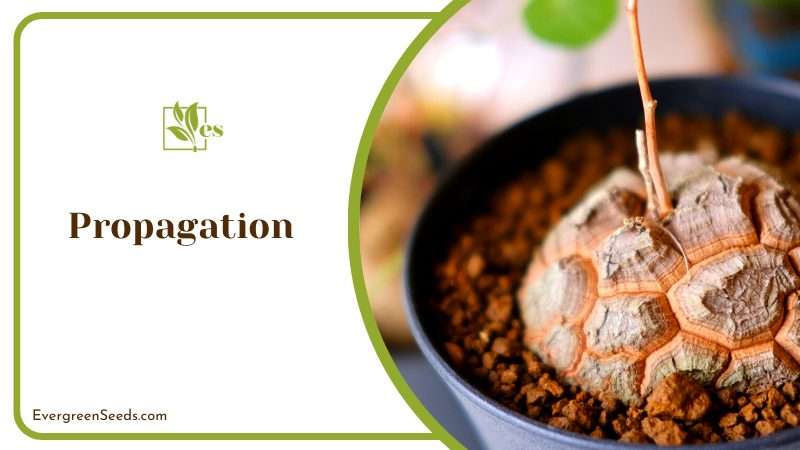
One is by sowing Dioscorea elephantipes seeds and the other is by stem cuttings. Let us look at both methods one by one through the following guide that will assist you in performing a successful propagation.
-Seed Sowing
Propagating Elephant foot plants from seeds takes six months or more.
Follow this guide to know how to successfully plant their seeds.
- Collect the seed capsule when it is completely dry.
- Sow them in a soil mixture that is mainly sand-based.
- Push the seed into a depth of a few inches.
- Keep the soil evenly moist.
- Maintain a temperature of around 77 to 86 degrees Fahrenheit.
- Be patient. It will take a few months before you see seedlings appear.
-Stem Cuttings
Although some people feel that this plant can not be propagated through stem cuttings, others get excellent results from it, so it is definitely worth a try.
Follow our guide to do it correctly and get better results.
- Carefully cut a healthy stem from the plant.
- Use sterilized tools to avoid infections.
- Allow the cuttings to harden before you plant them.
- Use a sand-based potting mixture to plant your cuttings after a few days.
- Water regularly.
Problems You Might Encounter
Elephant foot plants are generally problem-free. It may sometimes get affected by red spider mites, but washing them off will solve this problem. If there is a lack of moisture or the air is too dry, the leaves will turn yellow and fall off.
Overwatering will lead to root rot and kill the plant if not taken care of. Follow the guide above to give it the right growing environment and it will reward you in return.


